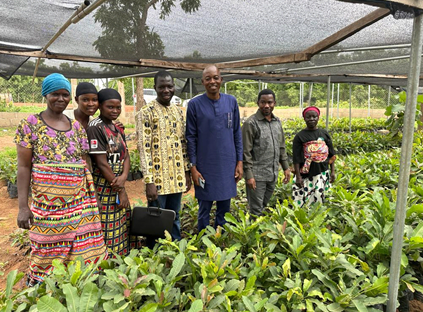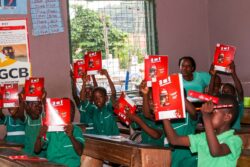…through pioneering shea agroforestry project
By Elizabeth PUNSU, Kumasi
The country is projected to generate more than US$65billion over the next 50 years through carbon credits under the Integrated Agroforestry Model in Shea Parklands – landmark initiative led by the Global Shea Alliance (GSA), West African Centre for Shea Innovation and Research at the University for Development Studies (UDS) and King’s College London.
Currently in its pilot phase, the initiative positions Ghana as an emerging leader in the global carbon credit market and aligns with the country’s commitment to reduce greenhouse gas emissions by 64.4 MtCO₂e, as set out in its Nationally Determined Contributions (NDCs) under the 2015 Paris Agreement.
The two-year pilot phase, which runs from May 2024 to April 2026, is being implemented in five districts: Kumbungu, Tolon and Savelugu in the Northern Region; Garu in Upper East; and Nadoli in Upper West Region. It aims to establish a robust carbon and biodiversity credit accreditation, monitoring and management platform tailored to support smallholder farmers in West Africa.
The pilot is fully funded by UK Innovate with £134,000. To transition into the full-scale commercial phase, which spans from April 2026 to May 2076, GSA is seeking additional sponsorship of no less than US$1.54million.
A breakthrough in climate finance
Dr. Alhassan Issah Suhiyini, Research Associate at UDS and GSA representative, said the project aims to achieve an emission reduction rate of nearly 37 million tonnes of carbon dioxide over 50 years through various carbon sequestration activities.
These include tree-planting, minimum tillage, compost and biochar production, hedgerows, cover cropping, clean cookstove adoption, beekeeping and the production of briquettes from shea value chain waste and other biomass.
The project is undergoing registration with the Gold Standard to trade carbon credits, enabling farmers to earn revenue for restoring degraded land and providing ecosystem services. It will also explore biodiversity credits, using the Biodiversity Net Gain framework developed by the UK government.
“We anticipate over US$64.5billion during the commercial phase. What makes this project unique is that aside from increasing crop yields and farmer incomes, about 80 percent of the carbon credit revenue will go directly to farmers -a global first,” Dr. Suhiyini told Business and Financial Times.
The remaining 20 percent will be distributed to government regulatory bodies, NGOs, traditional authorities and local institutions to support governance and sustainability. Of this, 10 percent will be allocated to regulatory and community development efforts – with the final 10 percent retained by GSA for monitoring, administration and project scaling.
Beyond tree-planting
Dr. Suhiyini stressed that the initiative is more than a reforestation effort, describing it as a comprehensive sustainable land-use model. It includes converting agricultural biomass into household fuel briquettes, promoting clean energy use and reducing deforestation. The project targets carbon sequestration of one tonne per acre in the first 10 years, increasing to 1.5 tonnes in the following decade and reaching two tonnes per acre from year 21 onward.
“This is a multifaceted model that combines ecological restoration, energy efficiency and socio-economic empowerment. We’re not just planting trees – we’re building a sustainable ecosystem,” he said.
Rural impact and women’s empowerment
The project is designed to deliver significant benefits to rural communities, with a focus on empowering women – key players in the shea value chain through collection, processing and sales. It targets 60 percent female participation through farmer groups and cooperatives.
National and international backing
Dr. Suhiyini called for stronger government backing to upscale the initiative nationwide. He appealed to the Ministry of Environment, Science, Technology and Innovation (MESTI) as well as Minister of State for Climate Change and Sustainability, Issifu Seidu, to support its expansion.
He also urged multilateral development banks and climate financing institutions – including the World Bank, African Development Bank, European Investment Bank, Green Climate Fund, Global Environment Facility, Adaptation Fund, Climate Investment Fund, UNDP and UNEP – to provide funding for scaling the initiative across Ghana and the region.
Dr. Suhiyini further highlighted the project’s potential to reclaim degraded lands, particularly those affected by illegal mining (galamsey) and promote sustainable land-use practices.
“With strong national leadership and support, this agroforestry model can be extended to retire harmful land-use practices and rehabilitate damaged landscapes,” he noted.
If successful, the Integrated Agroforestry Model could serve as a blueprint for similar projects across West Africa, unlocking significant climate finance opportunities while transforming rural livelihoods and boosting Ghana’s green economy.










